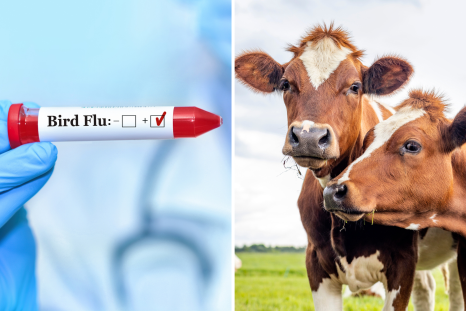Scientists have issued a warning after a resident in New Castle County, Delaware, spotted a large insect on their pillow that was found to be carrying a potentially deadly parasite.
Three months later, the same resident found another specimen of the same species, raising concerns about the prevalence of these insects on North America.
Read more: Compare the Top Health Savings Account (HSA) Providers
The black and orange insects were members of the species Triatoma sanguisuga, commonly known as the eastern bloodsucking conenose, which is part of a wider subfamily known as the "kissing bugs." They are about the size of a dime and can be found throughout Latin America and some southern U.S. states.
Finding these bugs as far north as Delaware is rare. What was even more unusual—and concerning—is the fact that at least one of these kissing bugs was found to be infected with a parasite called Trypanosoma cruzi, which causes Chagas disease.
With appropriate anti-parasitic treatment, Chagas disease is curable and likely to cause only short-lived, flu-like symptoms. However, if left untreated, the disease can result in serious heart problems and potentially even be fatal.
Read more: What Is a Health Savings Account?
According to the World Health Organization, at least 6 million people are infected with the disease globally, and roughly 10,000 die every year from the infection. The parasite is most commonly found in South and Central America, although it is occasionally seen in southern states in North America. This is the first reported case of the disease in Delaware, according to the University of Delaware epidemiologists who identified the parasite.
"It's not surprising that it was infected," Jennifer Peterson, a UD assistant professor and medical entomologist and the faculty member who identified the two specimens as kissing bugs, said in a statement. "It's more of a wake-up call that this bug needs to be studied."
Their findings were published in the American Journal of Tropical Medicine and Hygiene.
Due to the severity of the infection, the homeowner was tested for Chagas disease and was found to be negative. However, Peterson said that the case highlights the need for further testing and surveillance of both the Trypanosoma cruzi and Triatoma sanguisuga bugs in northern U.S. states.
"I hesitate to say that people need to be concerned or worried," Peterson said. "Rather, I am a proponent of arming oneself with knowledge [...] "The bugs are here. They're making contact with people. This paper was written to illustrate that there is a hole in the system."
Do you have a tip on a health story that Newsweek should be covering? Let us know via science@newsweek.com.
Disclaimer: The copyright of this article belongs to the original author. Reposting this article is solely for the purpose of information dissemination and does not constitute any investment advice. If there is any infringement, please contact us immediately. We will make corrections or deletions as necessary. Thank you.




